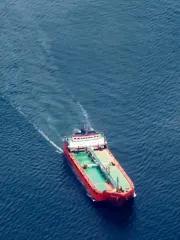Transit Clearance Services
Are you looking for quick and compliant support in customs transit procedures? We are here to help you. We are a full-service customs expert offering:
Contact us today and one of our customs specialists will be in touch.

The use of T1 forms has grown since Brexit, when the UK left the EU customs territory. This is because the T1 customs form allows your goods to move through the EU without paying Duty and VAT until arrival in the destination country.
Your Partner in Transit Clearance
Through support from over 1900 customs experts empowered by our advanced customs technology, we can provide you with the following critical services:
- Transit Documents: we prepare and submit your transit document clearance in all EU countries we are present and the UK
- Customs bond: we have the needed bonds to issue documentation for your goods in transit
- External Communication: we liaise with other government departments to ensure you meet guidance
- Risk Assessments: we continuously analyse your compliance risks
- Support and Coordination: we support and coordinate your physical inspections, together with customs-related authorities
- Advanced Knowledge: we provide advice on the correct procedures when using transit documents

Frequently Asked Questions (FAQs) | Transit
For what kind of goods and countries can I use transit procedure?
There are two types of transit documents:
T1 Document: a transport document needed if you want to transport goods coming from outside the European Union that haven’t been brought into free circulation (import cleared) yet.
T2 Document: a transport document is needed if you want to transport goods that are in free circulation in the EU through or to countries that are not member states, like Iceland, Liechtenstein, Macedonia, Norway, Switzerland, and Turkey.
How does the T1 transit procedure work?
The T1 transit procedure is begun by the exporting customs broker, who is also liable for the payment of Duty and VAT on the goods. This is so that taxes can be levied on your goods by any transit countries if the procedure is not completed at the destination country, preventing the use of T1 forms to bypass paying Duty and Vat to customs.
How do I obtain a T1 customs form?
To obtain a T1 customs form, your broker will need to complete the declaration electronically on NCTS, before the haulier can book in to present your goods to border force and make the T1 form live. Once the T1 form is live, a copy of this must travel with your goods so that any inspecting border agents can identify the goods are travelling under a T1 transit procedure. T1 customs forms are closed off at destination by presenting your goods to a border agency. The import clearance agent will also need to declare your T1 forms on their declaration to customs so that there is record that the Duty and VAT have been paid.
What is needed to create T1 forms?
After sending us an instruction to create the transit document, there are several pieces of information and documents that we need from you to create the transit document. T1 forms are created using the same documentation required for an export customs clearance (commercial invoice, packing list, and a transport document as a minimum).
- Commercial Invoice
- Classification, Origin, and Customs Value of the goods
- Master Bill of Lading
- Name and address of the recipient of the goods
- EORI number of the recipient of the goods
- Customs office of passage (route information, if applies)
- Customs office of the destination
- Prior customs procedure
- Arrival notice at the customs warehouse
Your customs broker will be able to complete both declarations simultaneously, provided your broker has a transit guarantee that allows them to raise T1s.
For a customs broker to have authorisation to begin the T1 transit procedure, they need to have a guarantee that they can allocate the Duty and VAT of a shipment against. In the event that your T1 customs form is not closed off at the destination, the customs broker has guaranteed they will pay the taxes. Your broker is only allowed a finite amount of Duty and Vat to be allocated against their guarantee at any time, so that there is always enough capital to pay any outstanding taxes.
At Customs Support UK, we have links to all ports and have authorisation to complete T1 transit procedures.
How long do I have to close off a T1 customs form?
How long your transit document will take depends on the complexity and quantity of data submitted. In the United Kingdom, once your T1 customs form has gone live, it is expected to be closed off within 2-3 weeks. After this, customs will begin the process of reclaiming the Duty and Vat from your customs broker.
During stage 1 of the reclaim, the Central Community Transit Office (CCTO) will send a notice to your customs broker that they need evidence of the T1 transit procedure being completed so that they can close the T1 customs form on the NCTS.
1 month after the stage 1 notice, the CCTO will issue a “Right to be heard” notice, which gives another month to produce evidence that the T1 form has been closed off.
After this month’s notice ends, your customs broker will be issued with a C18 payment demand for the Duty and Vat that is owed on the shipment.









